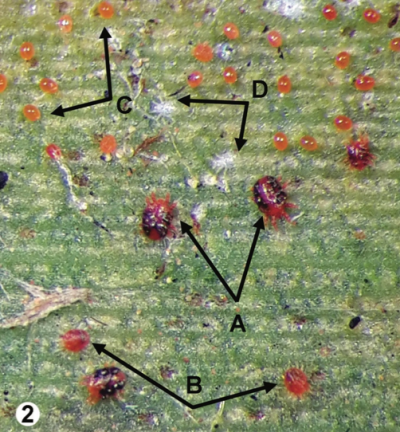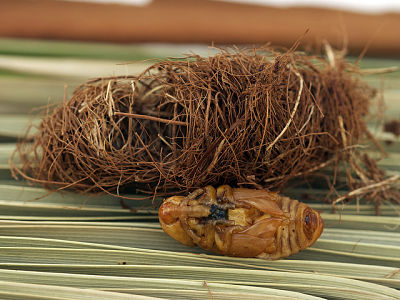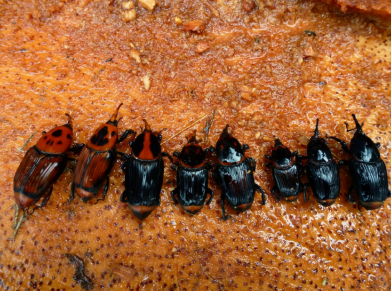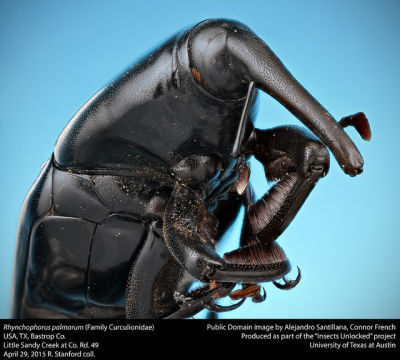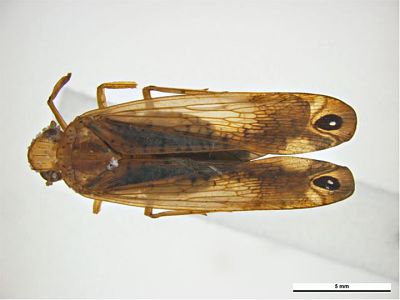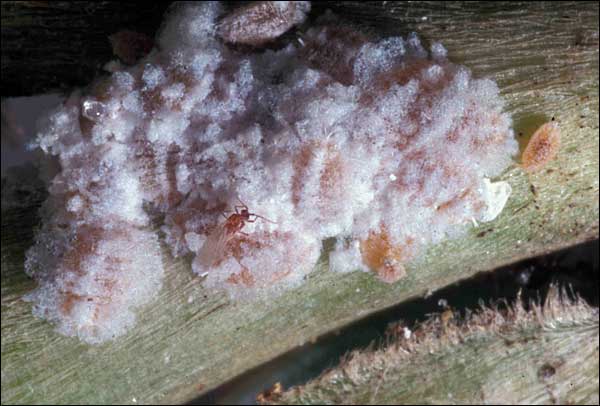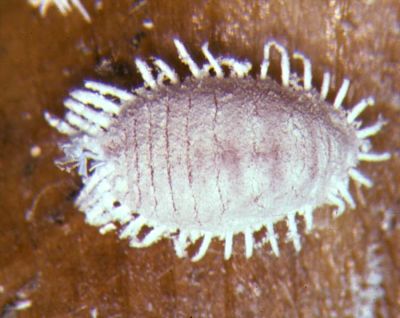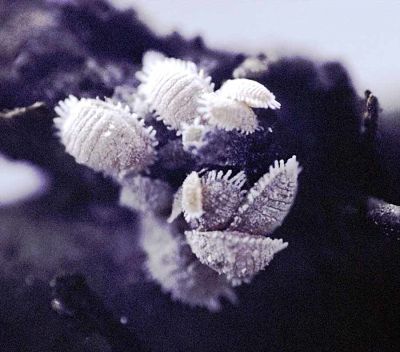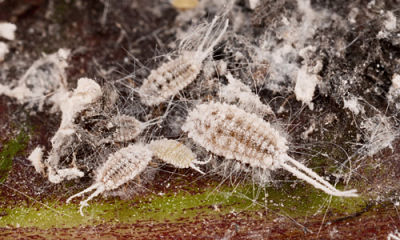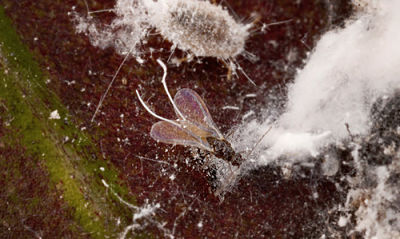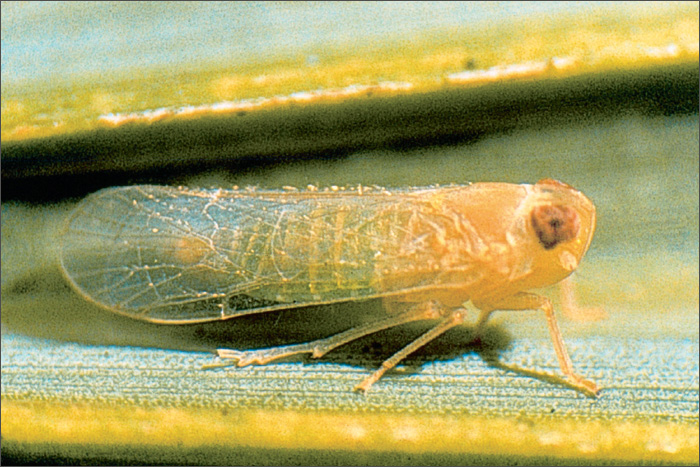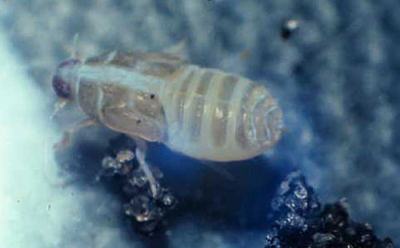Insects
These are some of the insects you might see around coconuts. Click on the links under 'More information' to find out more.
Insect |
More information |
||||
|
Bicoloured pennant ant tending mealybugs on breadfruit in Fakaofo, Tokelau (© Monica Gruber, Pacific Biosecurity) |
Argentine ants tending mealybugs (© Phil Lester) |
Ants - often seen around mealybugs or scale insects such as: |
|
Comparison of two similar coconut sap feeding insects (Amblypelta cocophaga (L) and Pseudotheraptus wayi (R)). Usually found on the young nuts (© Tristan Bantock and The Trustees of the Natural History Museum) |
||
|
Different stages of a sap feeding bug usually found on the leaves or nuts. A) Egg, B, C, D, E and F) immatures G) Adults (male on the left), H) Side view of adult (© Fabian Haas, ICIPE) |
||
|
Brown-yellow moth with reddish-brown wing markings. Usually spotted sitting on top of fronds (© Gerald McCormack, Cook Island Biodiversity & Natural Heritage) |
||
|
Brown moth with dark brown wing markings and white spots. Usually seen sitting on top of fronds (© Gerald McCormack, Cook Island Biodiversity & Natural Heritage) |
||
|
Cream-yellow Larvae/caterpillar (© Gerald McCormack, Cook Island Biodiversity & Natural Heritage) |
||
|
Life stages of Myndus taffini, a planthopper found around palms with foliar decay (© PestNet) |
||
|
Black to dark red beetle. Usually found on the base of fronds within the spear leaf (© Cameron Brumley, PaDIL) |
||
|
Creamy-white caterpillar that is flat, elongated and looks segmented (© USDA, Idtools) |
||
|
Slender beetle with metallic black-green on two thirds of its wings (Promecotheca opacicollis). Note the beetle can range in colour from yellow, orange and red. Some have brown to black or metallic purple on two thirds of their wings (© USDA, Idtools) |
||
|
Under a microscope showing a colony of worm-like insects. Adults show two pairs of legs (coconut mites) (© James V. DeFilippis, University of Florida) |
Coconut mite | |
|
Black beetle with distinct differences in horns between female (top) and male (bottom)(© Ken Walker, PaDIL) |
Coconut rhinoceros beetle - Melanesian May look similar to Coconut rhinoceros beetle - Oryctes |
|
|
Black beetle with Female (top) and male (bottom) differences (© Ken Walker, PaDIL) |
Coconut rhinoceros beetle - Melanesian May look similar to Coconut rhinoceros beetle - Oryctes |
|
|
Pupa with distinct adult features of a horned beetle (© Laurence Beaudoin-Ollivier, CIRAD) |
Coconut rhinoceros beetle - Melanesian May look similar to Coconut rhinoceros beetle - Oryctes |
|
|
Creamy-white grubs at different stages of growth (©Laurence Beaudoin-Ollivier, CIRAD) |
Coconut rhinoceros beetle - Melanesian May look similar to Coconut rhinoceros beetle - Oryctes |
|
|
Black beetle with a distinct horn on its head and orange-red hairs on its body (© Durham Field Office, US Forest Health Protection) |
Coconut rhinoceros beetle - Oryctes May look similar to Coconut rhinoceros beetle - Melanesian May be associated with excreted plant tissue and frass at the entrance of bored holes at the base of fronds. |
|
Cream-white grub with reddish-brown head (© Mark Schmaedick, American Samoa Community College) |
Coconut rhinoceros beetle - Oryctes May look similar toCoconut rhinoceros beetle - Melanesian May be found among fallen and rotten tree stumps. |
|
|
Scale insect found on leaves, nut and stems with a flat, clear oval cover with pale exuviae near the centre surrounded by eggs. Note the pear shaped body (© Salahud din, University of Florida) |
||
|
Insect that looks like a small fly and is found around or developing around scale insects (© Salahud din, University of Florida) |
||
|
Scale insect that looks like a 'fried egg' showing eggs in a crescent shape under the waxy insect cover. Found on leaves, stems, nuts (© Merle Shepard and Gerald Carner, Clemson University) |
||
|
Colony of scale insects with yellowish brown young with little to no waxy cover, throughout adults with flat, clear oval covers with eggs underneath. Found on leaves, stems and nuts (© Lyle Buss, University of Florida) |
||
|
Large green or brown grasshopper looking insects. Differences between males (top) and females (bottom). Usually seen sitting on top or the underside of fronds (© Ken Walker, PaDIL) |
Coconut sexava treehopper | |
|
Brown moths usually found laying eggs or mating on the leaves. Female (L) showing red vein-like markings and male with darker brown front wings and pale yellow back wings (© Ken Walker, PaDIL) |
Coconut spike moth | |
|
Life stages of a brown moth (c) and (d) found on coconut. a) larvae stages found damaging the nuts b) Cocoon for pupation found on the underside of leaves c) Pupa found on the underside of leaves (© Salmah Yaakop, Centre for Insect Systematics) |
Coconut spike moth | |
|
Winged insect with chewing in to the palms trunk (© Gerald McCormak, Cook Island Biodiversity & Natural Heritage) |
Coconut termite | |
|
Insect with distinct mandible compared to a worker. Usually seen on the palm trunk (© Gerald McCormak, Cook Island Biodiversity & Natural Heritage) |
Coconut termite | |
|
Magnified mite. Red in colour. Note the drop of liquid at the end of the setae and long, u-shaped mouthpart for piercing plant tissue (adult red palm mite, Magnified about 300x.) (© Eric Erbe and digital colorisation Chris Pooley, USDA) |
Red palm mite | |
|
Mite colony on leaves. A) Adult female B) nymphs C) eggs and D) moulted exoskeleton from growth (Stages of the red palm mite) (Daniel Oliveira, Embrapa Roraima) |
Red palm mite | |
|
Pupa with distinct adult features of a weevil and its distinct fibrous cocoon (© Katja Schulz, Flickr) |
Red palm weevil | |
|
Black to dark red weevils with long snouts. Some with red marks on their heads (© Paul Rugman-Jones, University of California, Riverside) |
Red palm weevil | |
|
Black weevil found on palms that are infested with red ring nematode. South American palm weevil, the host of the red ring nematode (© Insects unlocked, Flickr) |
South American palm weevil, the host of the red ring nematode, which causes Red ring disease | |
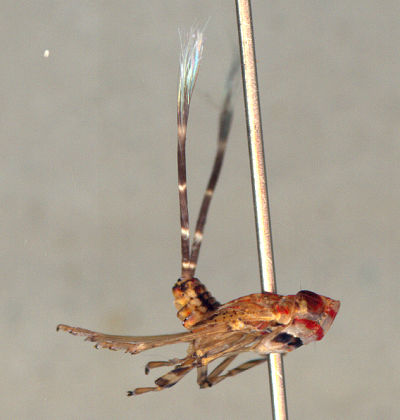 Brown leafhopper nymphs (young) with red bands of colour across their front and sides and waxy thread-like structures extending from the end of their body (© Ken Walker, PaDIL) |
|
|
|
16-18 mm long, brown leafhopper with distinctive white spots circled with black at the end of their wings (© Ken Walker, PaDIL) |
Finschhafen disorder | |
|
Colony of insects; Large waxy and woolly individuals, maroon coloured smaller individuals and a winged insect on top of the colony (© Takumasa (Demian) Kondo, idtools.org) |
May look similar to other mealybugs, including: |
|
|
Waxy and woolly looking insects with short waxy filaments around its waxy, woolly, pink-orange and flat body. Usually in colonies on stems and leafs (© Lyle J. Buss, University of Florida) |
Pineapple mealybug
May look similar to other mealybugs, including: |
|
|
Colony of flat woolly and waxy looking insects; Small and light colour young amongst pink-orange adults (© John Thomas, University of Queensland) |
Pineapple mealybug
May look similar to other mealybugs, including: |
|
|
Waxy and woolly looking insects with dark stripes down its back, fine and wispy glass-like threads around its body and two long waxy filaments at their end (© Lyle J. Buss, University of Florida) |
Striped mealybug
May look similar to other mealybugs, including: |
|
|
Winged insect with a pair of long waxy filaments. Usually found near colony of flat, woolly and waxy insects on stems and leaves (© Ariane McCorquodale, University of Florida) |
Striped mealybug
May look similar to other mealybugs, including: |
|
|
Cixiid planthopper, with maroon coloured eyes (Female Haplaxius crudus). Note the eyes may be white during the daytime (© Nigel A. Harrison, University of Florida) |
||
|
Cixiid planthopper nymph, with stumped wings (Haplaxius crudus) (© Jim DeFilippis, University of Florida) |
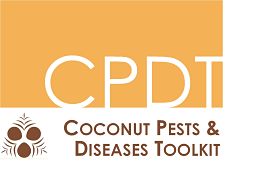
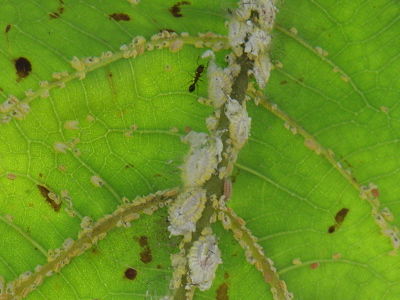
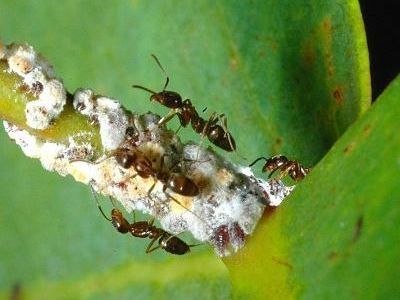
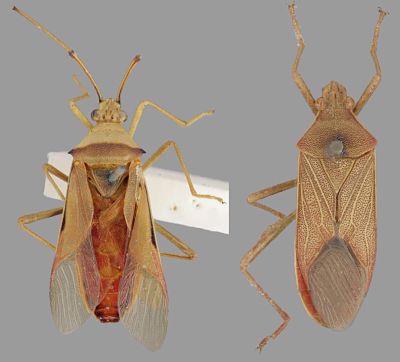
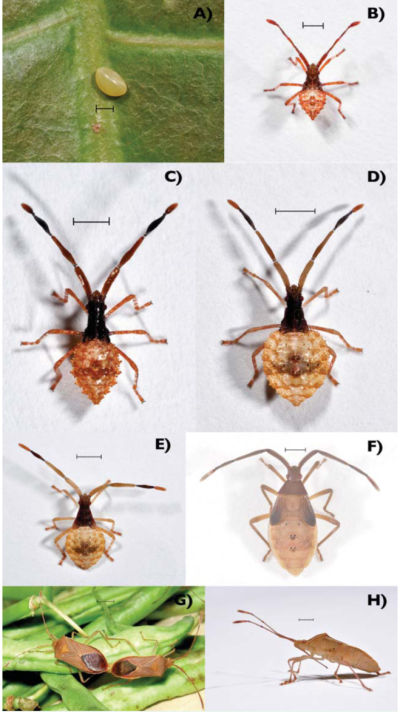
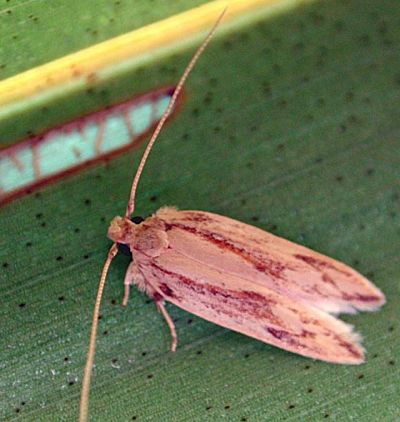
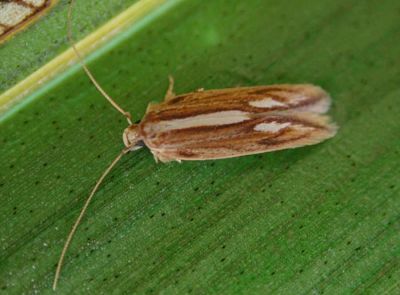
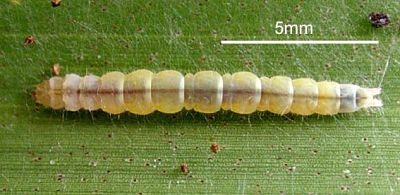
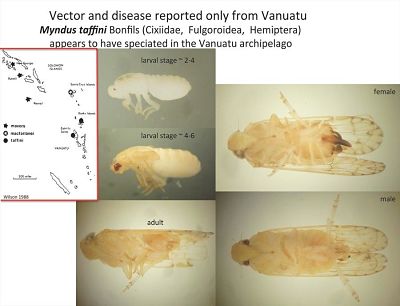
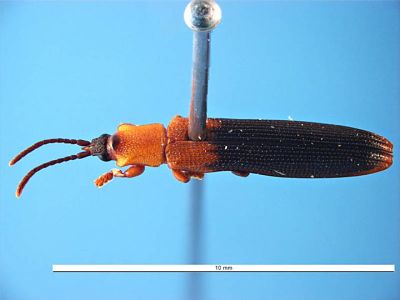
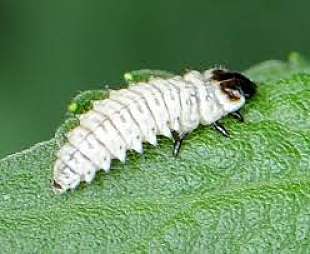
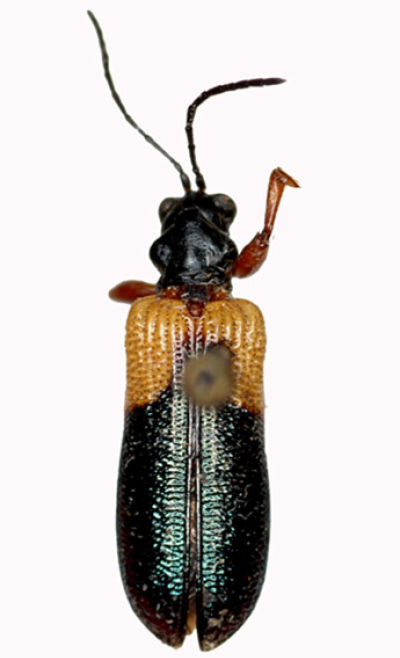
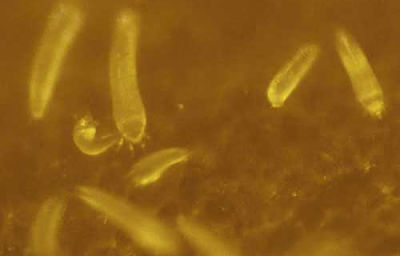
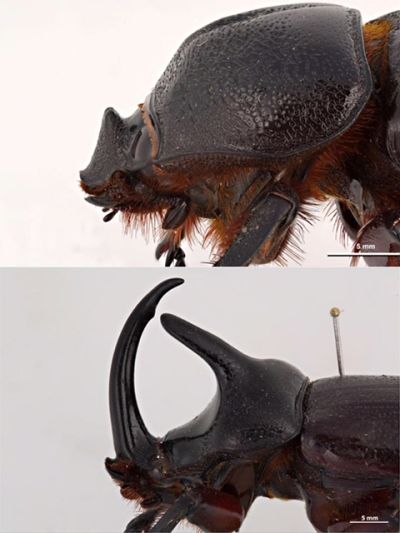
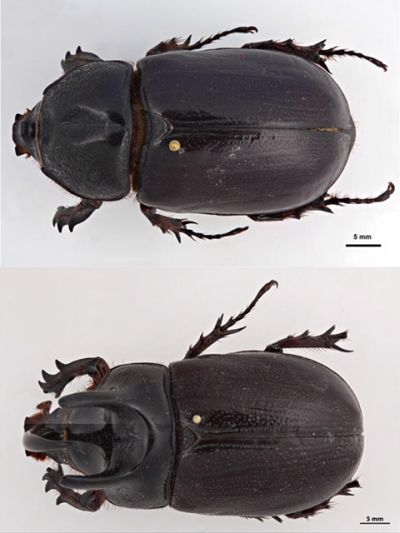
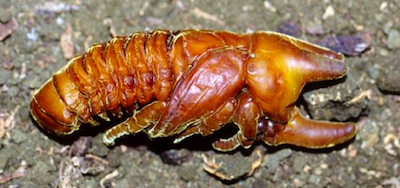
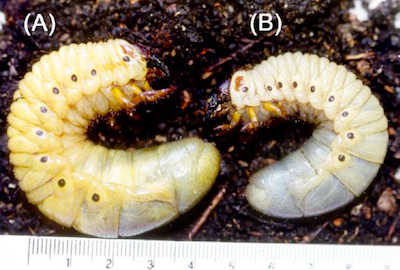
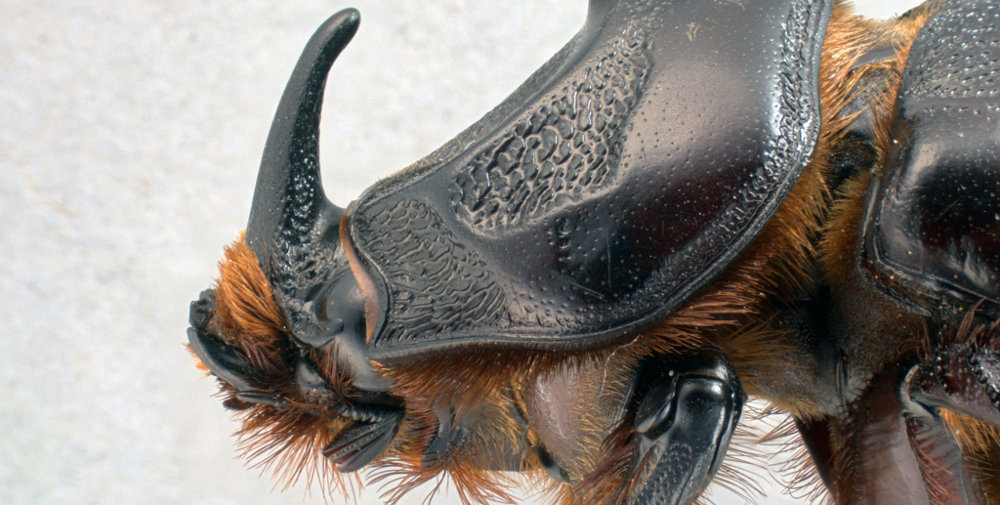

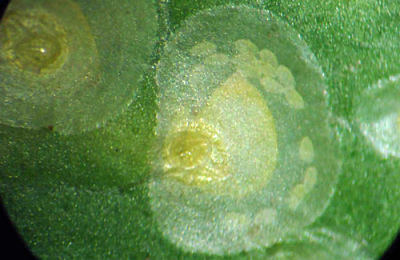
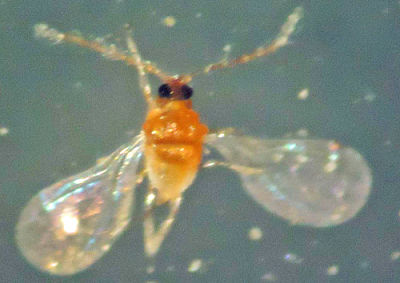
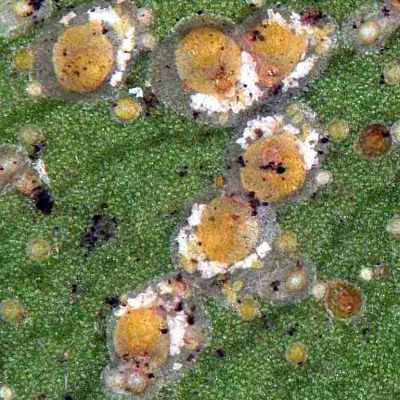
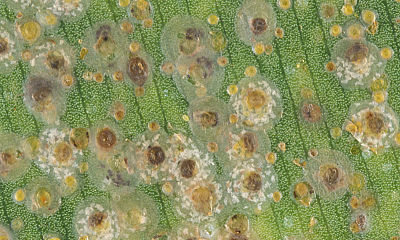
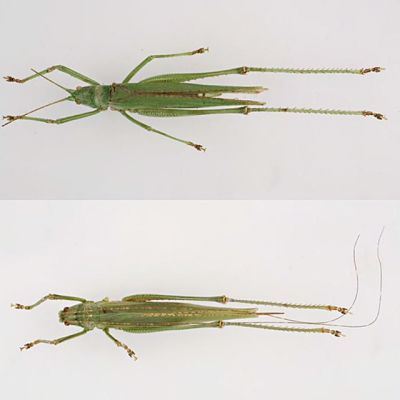
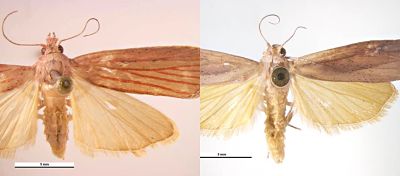
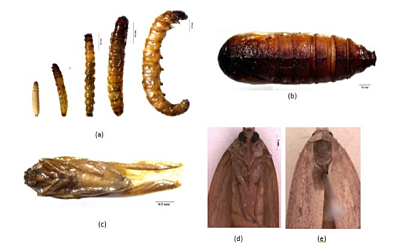
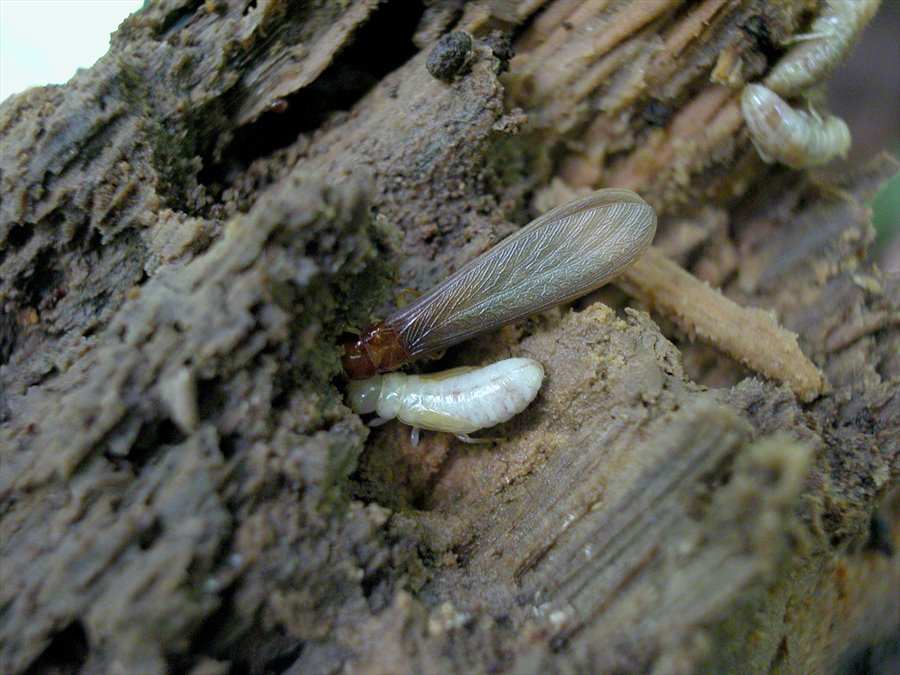
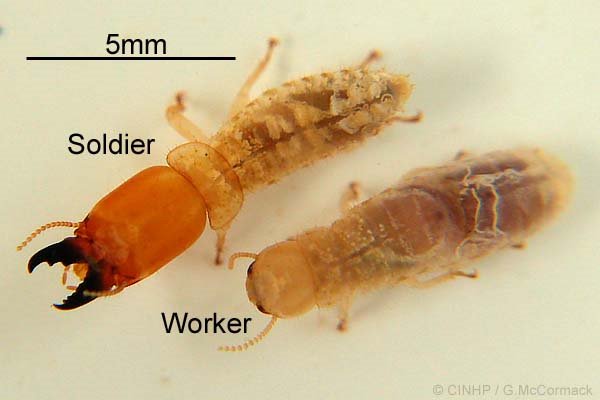
 _opt.jpg)
